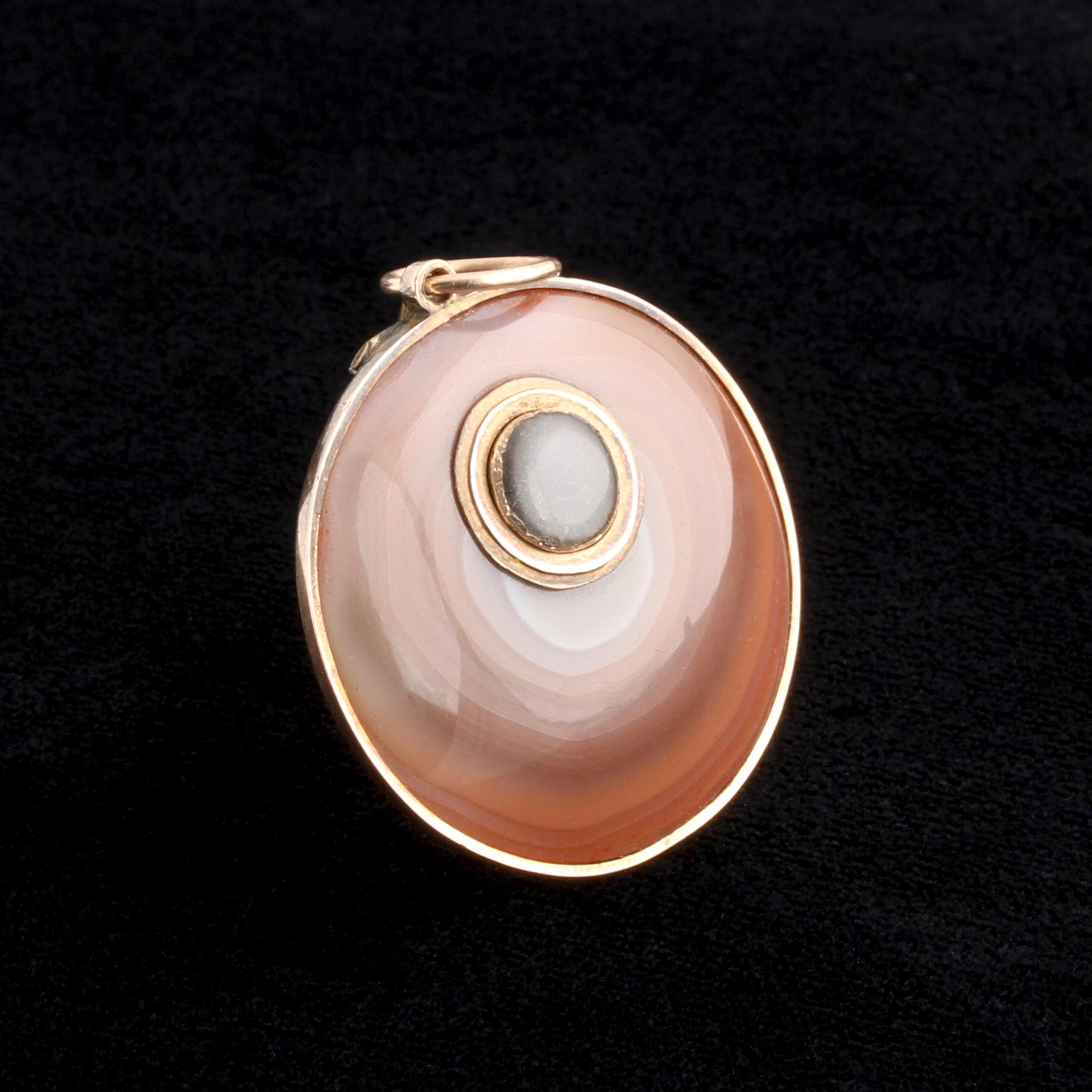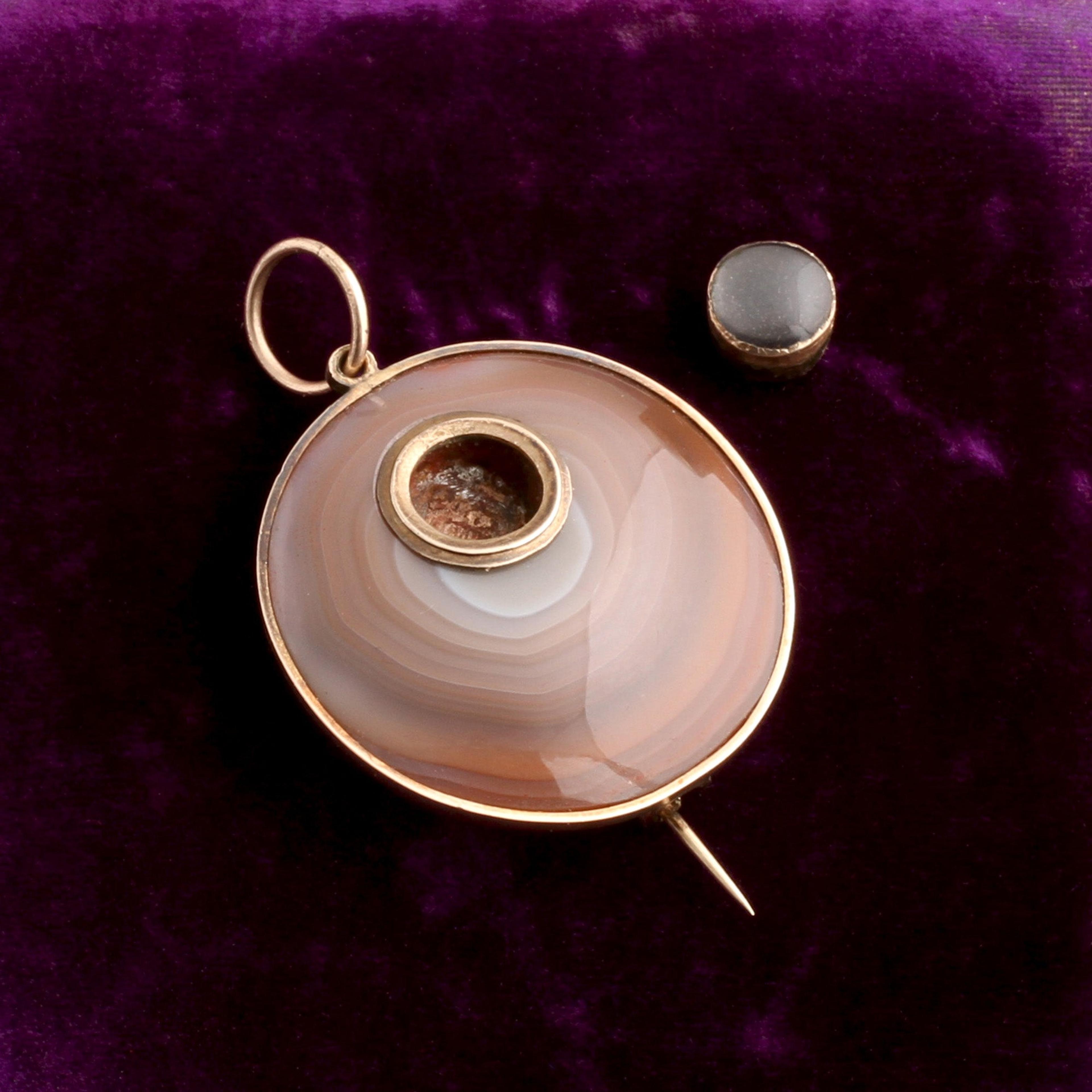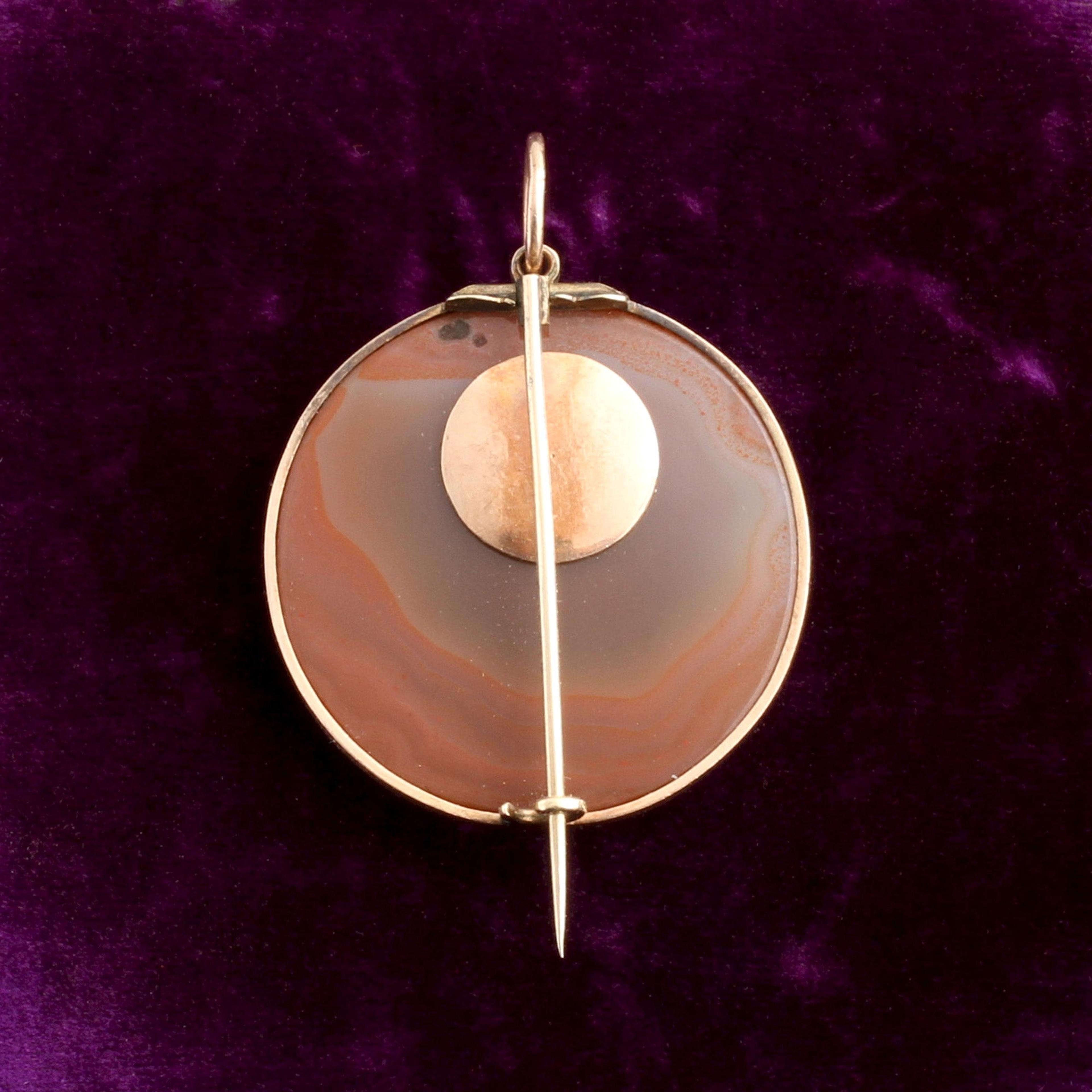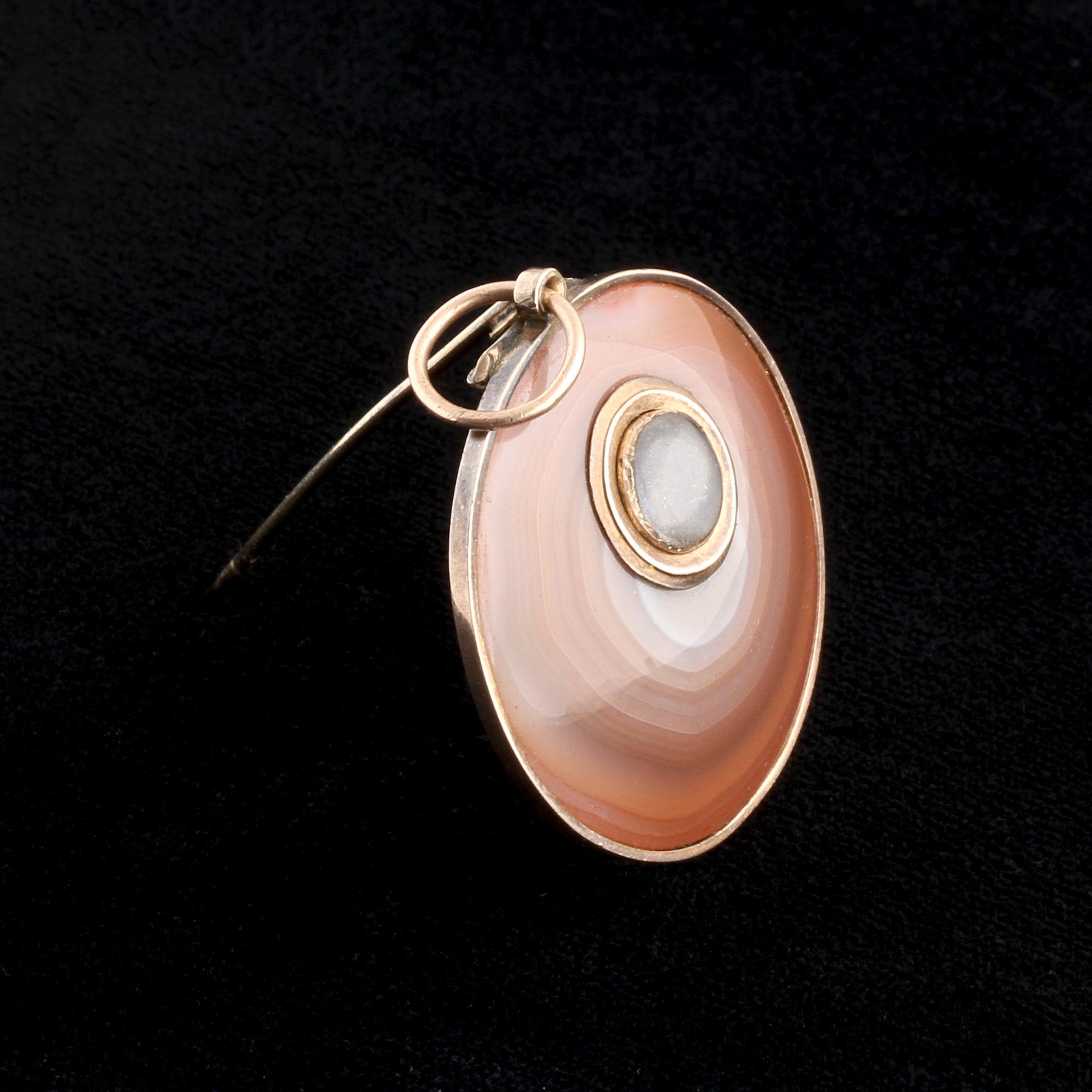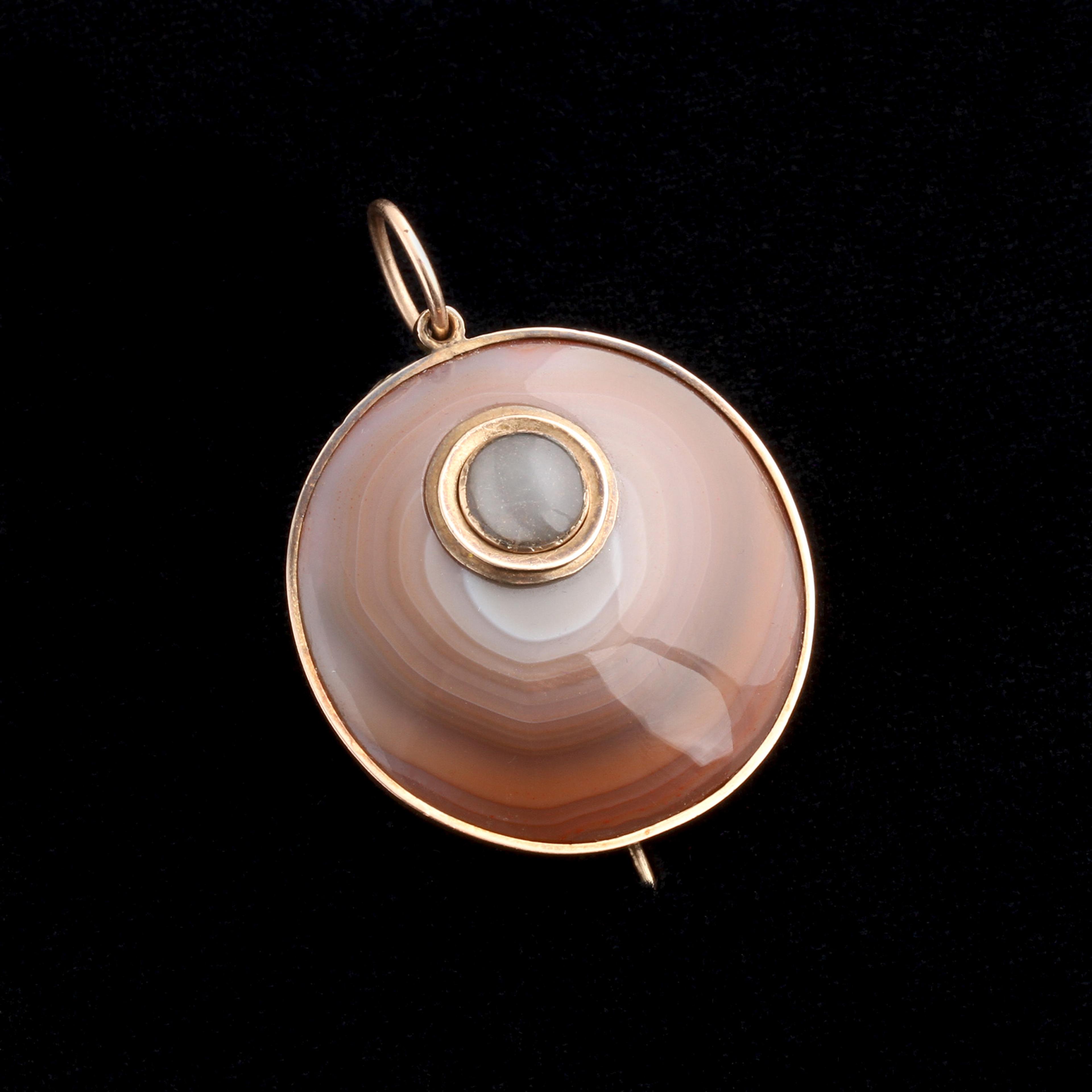Rings of pink, orange, and white agate glow semi-translucent in the light; the beauty of uncarved natural material is held in highest regard here. A tiny locket is easily removed so you can add your own personal souvenir—it fits quite loose and does not stay put now after a repair, but can be tightened by a local jeweler once you decide what keepsake you would like to house within it. Can be worn as a brooch or a pendant.
This product is final sale.
thedetails
- Materials
10k gold (tests), agate, glass
- Age
c. 1820
- Condition
Good—locket does not stay within its frame as-is, but can be secured shut by a local jeweler once you decide what keepsake you would like to put within it.
- Size
1 5/8" length including the bale (1 7/8" length including bale and tip of pin), 1 1/4" diameter
Need more photos?
Send us an email to request photos of this piece on a model.
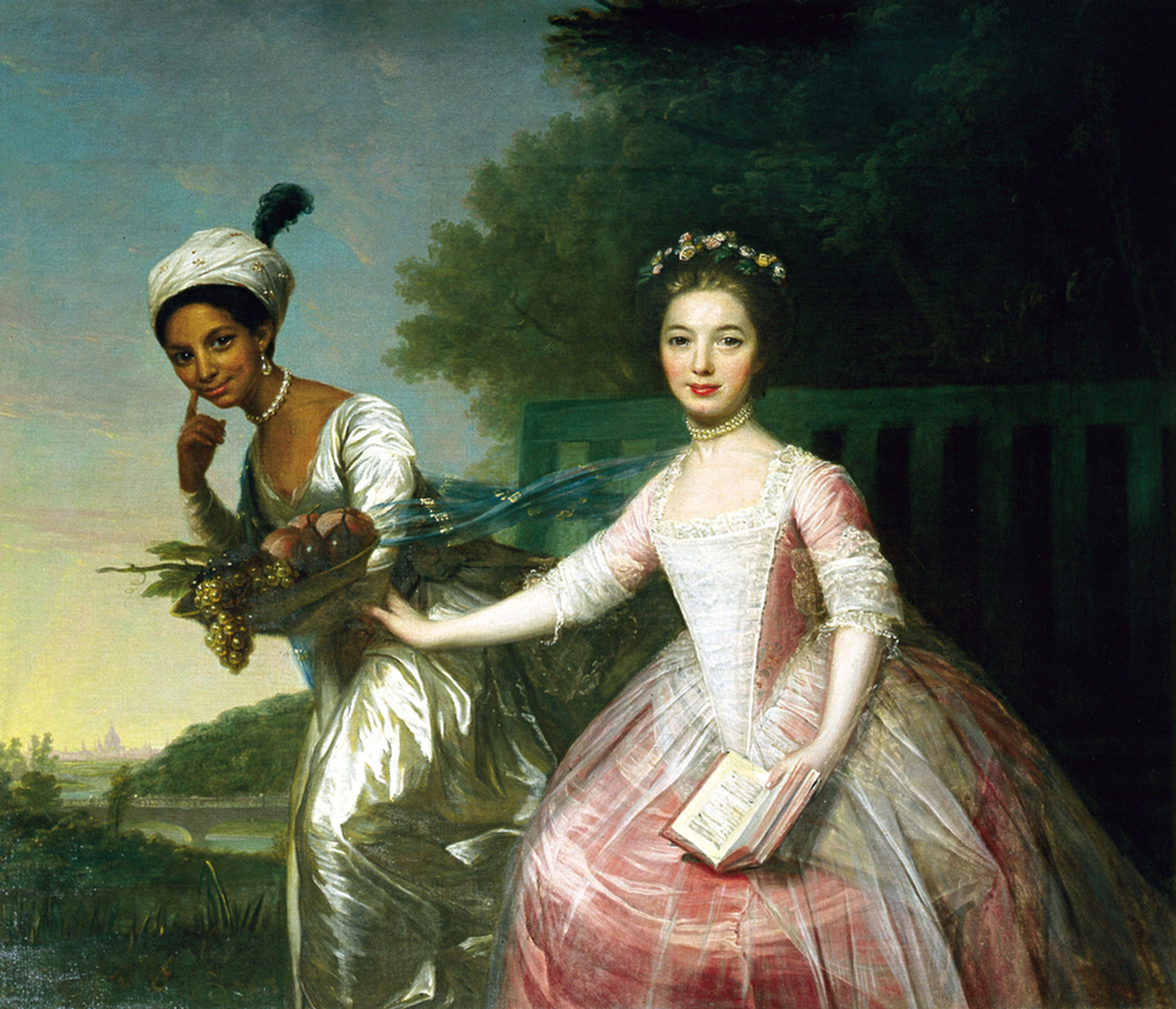
Aboutthe
GeorgianEra
1714 — 1837
As imperialist war raged in the Americas, Caribbean, Australia, and beyond, the jewelry industry benefited: colored gems from all over the empire became newly available. A mix of artistic influences from around Europe contributed to the feminine, glittering jewels of the era. Dense, ornate Baroque motifs from Italy showed up in Georgian jewelry, as did French Rococo’s undulating flora and fauna. Neoclassical style made use of Greek and Roman motifs, which were newly popular due to the recently uncovered ruins of Pompeii and Herculaneum. Lapidary methods improved: the dome-shaped rose cut was popular, as was the “old mine cut,” a very early iteration of today’s round brilliant cut.
The boat-shaped marquise diamond cut was developed around this time, supposedly to imitate the smile of Louis XV’s mistress, the marquise de Pompadour. Paste — an imitation gemstone made from leaded glass — was newly developed in the 18th century, and set into jewelry with the same creativity and care as its more precious counterparts. Real and imitation gems were almost always set in closed-backed settings, lined on the underside with thin sheets of foil to enhance the color of the stone and highlight it's sparkle. This makes Georgian rings tough for modern women to wear, especially on an everyday basis: genteel, jewelry-owning ladies of the 18th century were not famous for working with their hands like we are. Nor did they wash their hands as much as we do. Water will virtually ruin a foiled setting, so take special care with your Georgian ring. Very little jewelry from this period is still in circulation, and it's very difficult to repair.

please note:Terms of Sale
During the archive sale, shipping is FREE for purchases over $300 within the continental US. For US-bound purchases under $300, a flat $10 fee will be charged to cover packaging and shipping costs. International orders will be subject to our normal shipping fees, and may incur customs charges. Please refer to our FAQ's for more information on our international shipping policy.
For sale orders, we'll be shipping via USPS first class mail. Any orders valued over $1,000 will ship via UPS ground, insured and with signature required. Since these sales are always extremely popular, expect to wait up to 4 weeks for shipping and handling; for any orders involving sizing or stamping, expect to wait up to 4-6 weeks. We have one employee and expect many hundreds of orders. You'll receive an email when your order ships, which may take several weeks. Please be patient!
To keep things cheap for everyone, we will be using basic, minimal packaging for all archive sale orders. We are unable to provide gift wrapping or notes for any sale orders—sorry!
If you place multiple orders, email us with both your order numbers. We’ll refund you the second shipping fee and will combine all items into one package.
All sale items are FINAL SALE. No refunds or exchanges.
